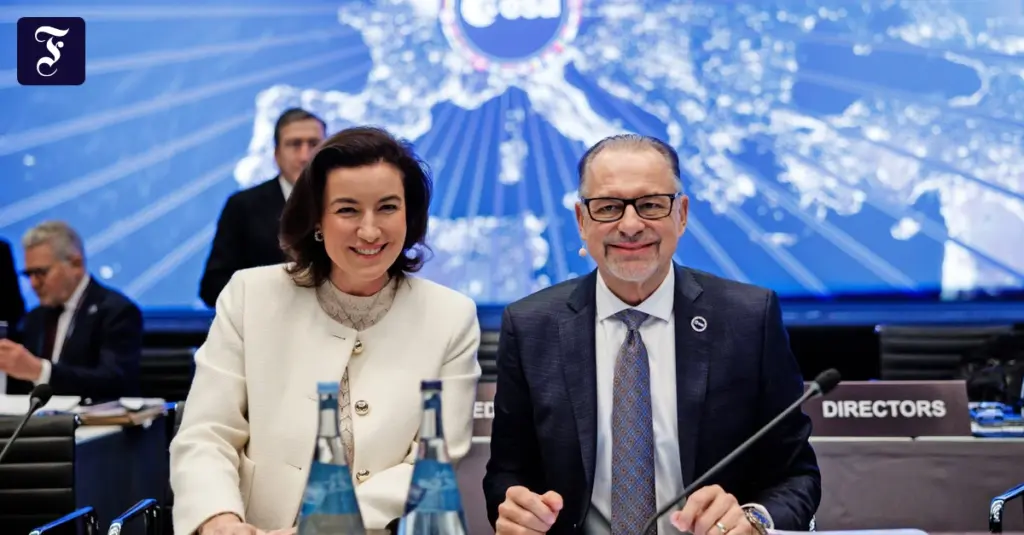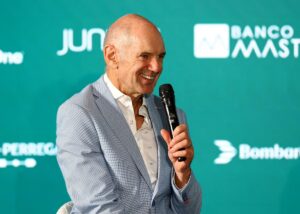
Chasing billions, record budgets so as not to be left behind in the competition for space activities – that is the essence of the conference of responsible ministers from the 23 member states of the European Space Agency ESA, which started on Wednesday in Bremen.
ESA, led by Director General Josef Aschbacher, has outlined a budget plan worth 22 billion euros for the next three years. In 2022, the organization received 16.9 billion euros from member countries. That’s already a record. But there was great confidence at the start of the conference that the next budget jump would be successful.
“It’s easier to explain the importance of space travel today than it was three years ago,” Aschbacher said. Ahead of the conference, he warned that Europe would only take a marginal position in the space race if investments were not made soon. Now, according to reports, financial commitments for around 90 percent of the ESA plan have been made before the responsible ministers meet on Wednesday.
Germany proved to be a particular source of support. Space Minister Dorothee Bär (CSU) said Germany wanted to contribute around five billion euros. “Germany is the biggest contributor to ESA and we want to expand our commitment,” Bär said in Bremen. Therefore, Germany used the opportunity to strengthen its influence in ESA.
According to media reports, France, the second largest contributor, may only contribute 3.6 billion in a tight budget situation. This even carries the risk that Italy could overtake France. The amount of the order returned to the local company depends on the contribution.
So far it depends on the partner
Although ESA’s research program has generated little debate, the “European Resilience from Space” (ERS) program, in which ESA highlighted for the first time the military benefits of previously obscure technological possibilities of remote sensing, navigation and surveillance, is now playing a greater role in Bremen.
“Funding for space activities will increasingly come from defense ministries in the future, whereas in the past, at least in Europe, most funding was covered by civil ministries,” Aschbacher said. In response to this shift in emphasis, the ERS budget for the next three years will probably not be finalized at the Bremen conference; states and their departments of defense should be able to increase financial commitments over the next year.
However, the money will not be enough. According to Aschbacher, spending on space in America is six times higher than in Europe. The consequences are visible. He was once asked why space companies like Elon Musk’s SpaceX were not founded in Europe. The answer is simple: other countries have long done more for space travel and thereby created opportunities for companies.
Europe has so far relied heavily on partners in space travel. Manned space travel is currently impossible on its own, and the ESA conference will not change that. But we want to become more independent, for example with rockets that launch satellites into space. For a long time, ESA has relied solely on rockets from the Ariane Group. Their Ariane 6 experienced many delays in development.
Since Italian manufacturer Avio’s Vega-C rocket is also temporarily decommissioned, the new satellite will have to stay in the past for a little longer. According to the Federal Association of the German Aerospace Industry (BDLI), there were 220 launches of rockets for satellite transportation last year, most of them in US projects, 67 in China, Europe was behind India with only four launches.
More competition
Things like this must never happen again. Young manufacturers making smaller launchers should provide stimulus. ESA promotes their development with a competition. At least two winners will each receive up to 169 million euros. The five start-ups that passed the initial selection for the European Launcher Challenge (ELC) include Isar Aerospace from Ottobrunn near Munich and Rocket Factory Augsburg. Orbex from the UK, PLD Space from Spain and Maiaspace from France are the other ELC finalists.
They all have the same goal of achieving a first orbital flight within the next one to two years and then gradually increasing their launch speed and rocket size. For now, new satellites cannot carry more than ten tons of payload like Ariane 6, which is needed for ESA’s Argonaut lander, which is scheduled to reach the moon in 2030. But many satellites weigh less than a ton. Smaller rockets also allow missions to be planned more quickly and, most importantly, more cheaply.
At ESA, under Director General Aschbacher, there is a prevailing view that more competition is a good thing for the launch vehicle industry. And of the startups still developing small rockets today, one or two companies could become heavy-duty rocket manufacturers in the medium term – and imitate the Ariane 6.
The ministerial conference in Bremen is now intended to further secure the Launcher Challenge. The idea that competition and not national proportional representation leads to the promotion of rocket manufacturers is still something that countries need to get used to. In addition to ELC finalists Isar Aerospace and Rocket Factory, the federal government has backed another flagship of Germany’s new space scene: Neuenstadt am Kocher’s Hyimpulse.
More efficient
Berlin’s funding policies and the German startup’s stated goal of breaking the Ariane and Avio quasi-monopoly have caused unease in France, which is by far the leader in rockets in Europe. The general opinion in Paris is that Germany is undermining European space cooperation. There is a risk of investment fragmentation and destructive competition, although forces must be gathered to fight SpaceX.
But ESA emphasizes that NASA’s approach in the US is modeled on the European rocket competition. ESA wants to act as a “major customer” and buy launch services from rocket manufacturers. This market model is intended to guarantee greater efficiency, as in America.
France has now also adapted to this paradigm shift. Maiaspace is a subsidiary of the Ariane Group start-up which was founded at the insistence of the government. This aroused suspicion in Germany. Maiaspace not only benefits from Ariane’s know-how, including the “Prometheus” engine developed with European funding, but also from government aid totaling hundreds of millions. It distorts competition.
Maiaspace Managing Director Yohann Leroy denied the accusation. The “Prometheus” machine was not given as a gift, but rather paid for, and the subsidy in France was not a direct subsidy, but flowed in the form of start-up services, as in Germany.
With a payload of up to four tonnes, Maiaspace enables the highest payload among newcomer rockets and also offers the prospect of reusability, which, like SpaceX’s Falcon 9 rocket, promises to significantly reduce costs. They want to take off first at the end of next year and then start commercial flight operations in early 2027.
Cheaper, more flexible and easier to store
Jörn Spurmann of the Augsburg Rocket Factory praised the rocket competition: “The European Launcher Challenge creates real competition in the European market for launch services and opens up access to several privately developed launchers.” As a major reliable customer, ESA is “an important element in mobilizing private capital for new launch systems in Europe and offering them competitively worldwide.”
Instead, at Hyimpulse, they hope to find their place in the launch vehicle market without even taking part in the Launcher Challenge. We implemented a different strategy than our competitors, explained Managing Director Christian Stricher in an interview. They do not rely on liquid actuation, but rather on a hybrid engine in which solid paraffin – that is, wax – is burned with the help of liquid oxygen. This is intended to make the Hyimpulse rocket cheaper, more flexible and easier to store compared to competing models.
Instead of quickly building bigger and bigger rockets like this one and SpaceX at the time, Stricher initially wanted to stick with smaller rockets and be a fast-reacting provider. This makes Hyimpulse attractive to military customers. The 35 billion euro program of Federal Defense Minister Boris Pistorius (SPD) will be linked to many new satellites that should be sent into space within a few years. “If the Bundeswehr wanted to start quickly, Ariane would not have done that,” Stricher said.





